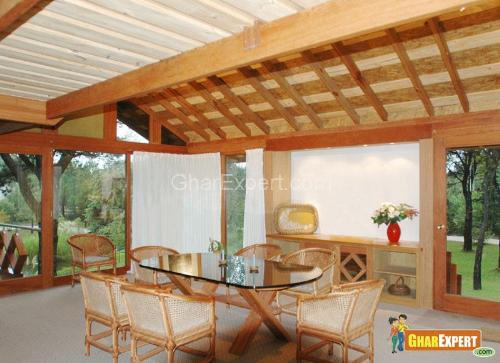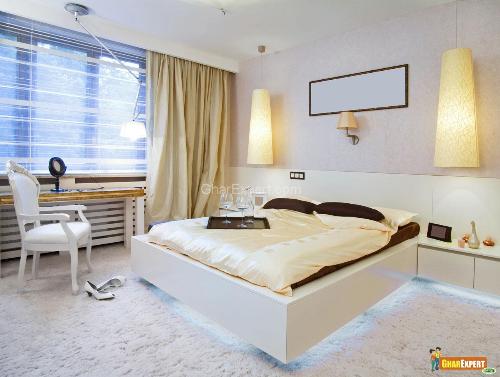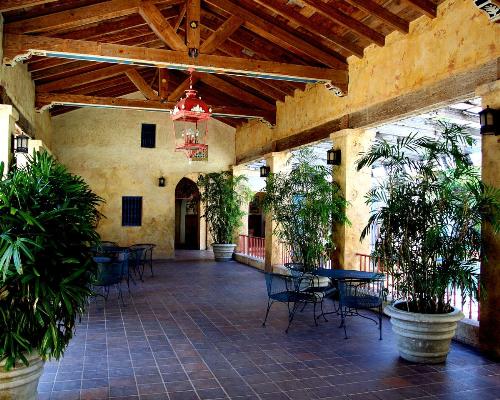Environment Friendly Houses

“INTELLIGENT BUILDING –Need of the Hour”
“THERE IS NO PLACE LIKE HOME - It’s a safe haven for its occupants.”
What is an Environmentally friendly house?
A house is a system of inter connected components. Even one badly designed component can affect the whole system, therefore, one has to plan and design the system very minutely.
An environmentally friendly house is designed and built to be in tune with its occupants, nature, environment and ecosystem. It is designed and built according to the region it is located in, keeping in mind the climate material availability and building practices.
Basic Design Principles for a Nature Friendly House
Orientation
This is very basic but extremely important factor. Proper orientation of a house is often overlooked and ignored during the design phase of the project. Site specific planning is very crucial for a nature friendly house.
- Orient the house appropriate to the region’s climate. For the hot climate of our southern and western regions minimize the solar gain by minimizing hot afternoon and late morning heat gain. In these regions orient houses wherein long side faces south and north.

Reduce Energy Gain Or Loss
Depending upon the climate unwanted solar gain or loss is a critical issue. For example maximum exposure to sun is needed in cold climate.
- Ample roof overhangs are key to reducing heat gain in hot climate. They also help in saving energy, providing some spill over space and increase the life span of the building. If cost is an issue, then design the overhangs, only for southwest facing doors and windows.
Dark Roofs Absorb Heat
These are good for cold climate and bad for hot climate. Provide a radiant barrier for hot climate.
- If budget permits introduce a well shaded double pane window especially on the south wall.
Lighting
Light is energy producing element in the house .Take advantage of the sunlight as much as possible.
- Clearstory windows are the best way to achieve this goal and also help in naturally siphoning heat out of the space.

Responsible Landscaping
Landscaping is a very important part of a house design; it also requires careful planning so that it doesn’t become a burden for the house owner and the community.
- For areas with draught problem provide a thicker layer of top soil so that lawn requires less water in summer season and water is conserved during draught period.
- Preserve the top soil while grading and excavating for the foundation and harvest it as top soil on the site.
- Design of the building should itself be as such that greenery should flow into your house.
- Nature not only provides a design element to the house but also makes the environment livelier.

External Ventilation
- Install external ventilating exhaust fans in windowless bathrooms where there may be a lot of internal moisture generation. This will help in reducing mold and mildew generation.
- Install automatic switches on all exhaust fans to save energy.
- The concept of cross ventilation in a building is a mandatory factor as it helps in keeping the house fresh and you energetic.
Usage of Paints
- Avoid using high sheen or glossy wall paint on the exterior
walls. - Use low VOC (Volatile Organic Compounds) latex paints on
the interior walls.
These are some of the suggestions to make your building more energy efficient and thereby reducing the load of electricity bill on your pocket.
So lets stand together to convert our house into home,sweet home.
 Pool covers become an important thing when the swimming season ends. As they reduce evaporation as well as protect your pool from dust, dirt and bacteria’s. Just read about this requirement of the pool.
Pool covers become an important thing when the swimming season ends. As they reduce evaporation as well as protect your pool from dust, dirt and bacteria’s. Just read about this requirement of the pool.
 You spend a lot of money to construct a swimming pool and on its other equipments. But if your pool is frequently too cold to swim then your all investment is worthless.
You spend a lot of money to construct a swimming pool and on its other equipments. But if your pool is frequently too cold to swim then your all investment is worthless.
 Pools are a great way of cooling and comfort. Pool cleaning is necessary to enjoy a comfortable bath. Cleaning protects your pool equipments. Pool filters play a main role as they help us to remove the dust, dirt particles and smallest debris and keep your swimming pool clean and healthy.
Pools are a great way of cooling and comfort. Pool cleaning is necessary to enjoy a comfortable bath. Cleaning protects your pool equipments. Pool filters play a main role as they help us to remove the dust, dirt particles and smallest debris and keep your swimming pool clean and healthy.
 Courtyards are wonderful place to create space for sitting and relaxation. Blooming flowers fragrance, blowing wind, plants beauty and outdoor furniture give you a place to enjoy the evening.
Courtyards are wonderful place to create space for sitting and relaxation. Blooming flowers fragrance, blowing wind, plants beauty and outdoor furniture give you a place to enjoy the evening.
 If you are planning to install an in ground swimming pool in your home, you can find a range of designs and styles to choose from. If you prefer a concrete pool, there are different shapes. If you are thinking about fiber glass pool, you can choose from number of manufactured pools.
If you are planning to install an in ground swimming pool in your home, you can find a range of designs and styles to choose from. If you prefer a concrete pool, there are different shapes. If you are thinking about fiber glass pool, you can choose from number of manufactured pools.
 If you are looking for perfect outdoor furniture that is comfortable and versatile for sitting, Hammock may be the right choice. Let’s know about various Hammocks and Hammock chairs that meet outdoor requirements.
If you are looking for perfect outdoor furniture that is comfortable and versatile for sitting, Hammock may be the right choice. Let’s know about various Hammocks and Hammock chairs that meet outdoor requirements.
 Garage has become the storage solution for the house. There is need to have proper garage organization to keep it clutter free. You want to utilize space in garage for storage read the suggestions for that.
Garage has become the storage solution for the house. There is need to have proper garage organization to keep it clutter free. You want to utilize space in garage for storage read the suggestions for that.
 An environmentally friendly house is designed and built to be in tune with its occupants, nature, environment and ecosystem. It is designed and built according to the region it is located in, keeping in mind the climate material availability and building practices.
An environmentally friendly house is designed and built to be in tune with its occupants, nature, environment and ecosystem. It is designed and built according to the region it is located in, keeping in mind the climate material availability and building practices.
 For painting exteriors of your home, you should know proper guidelines on primer, paint quality, paint color, weather conditions as these are important factors for paint work to create elegance on exterior walls of the house. Here are given some tips for smooth and beautiful exterior wall painting.
For painting exteriors of your home, you should know proper guidelines on primer, paint quality, paint color, weather conditions as these are important factors for paint work to create elegance on exterior walls of the house. Here are given some tips for smooth and beautiful exterior wall painting.
 Outdoor lighting is essential to light up paths and walkways, outdoors, driveways, pools or other areas and improves style quotient of a home also.
Outdoor lighting is essential to light up paths and walkways, outdoors, driveways, pools or other areas and improves style quotient of a home also.
 The patio flooring you choose should be appealing, easy to maintain and durable. Attractive design of patio flooring is another important feature of patio. Read about the various options available in patio flooring.
The patio flooring you choose should be appealing, easy to maintain and durable. Attractive design of patio flooring is another important feature of patio. Read about the various options available in patio flooring.
 Pergolas are nice places to relax and entertain with family. Pergola add style, art and structure to the exterior of your house. In this article are given tips to design an eye catching Pergola.
Pergolas are nice places to relax and entertain with family. Pergola add style, art and structure to the exterior of your house. In this article are given tips to design an eye catching Pergola.
 Swimming pools are rich sources of pleasure. They not only amuse us but energize the body also. They provide extreme relaxation and relief from hot summer. These pools are available in various options.
Swimming pools are rich sources of pleasure. They not only amuse us but energize the body also. They provide extreme relaxation and relief from hot summer. These pools are available in various options.
 Veranda or Gallery is an additional space for relaxation and entertainment. It is an opened gallery which is usually outside the home and enhances the beauty of houses.
Veranda or Gallery is an additional space for relaxation and entertainment. It is an opened gallery which is usually outside the home and enhances the beauty of houses.
 Kota stone flooring is a subtle blend of grandeur and luxury giving the interior and exterior a gorgeous look.......
Kota stone flooring is a subtle blend of grandeur and luxury giving the interior and exterior a gorgeous look.......
 To get maximum ventilation and natural light in your house, make sure the building is properly oriented. Orientation of building saves energy and provides comfortable living as well. This article tells you about various factors and benefits of building orientation.
To get maximum ventilation and natural light in your house, make sure the building is properly oriented. Orientation of building saves energy and provides comfortable living as well. This article tells you about various factors and benefits of building orientation.
 Preview some of the most impressive pictures of kitchen from GharExpert Gallery.
Preview some of the most impressive pictures of kitchen from GharExpert Gallery.
 A solid roof on building is very important for everybody living in the house. The roof should be constructed in a way that assures you great safety. Here are given details about different types of roofing.
A solid roof on building is very important for everybody living in the house. The roof should be constructed in a way that assures you great safety. Here are given details about different types of roofing.
 Frames of doors and windows are most important parts of your doors and windows. They are available in different size, height, width and shapes. Frames hold locks and hinges and support door and windows to shut and open easily. Here is what you need to know about different doors and windows frames.
Frames of doors and windows are most important parts of your doors and windows. They are available in different size, height, width and shapes. Frames hold locks and hinges and support door and windows to shut and open easily. Here is what you need to know about different doors and windows frames.
eco-friendly

HOW TO CREATE A POSITIVE ENVIRONMENT IN YOUR HOME WITH VASTU

Musical Environment in Drawing Room

House exterior design with car porch front-house-elevation

Glass House / Bar House

3D view for Exterior of house. Front Elevation of house

Ventilated sit out in the house
semi finished exterior of house

House Model

House Model

House Model

House Model

House Model

house elevation

front elevation design for house
Exterior Elevation design for 2 story house

Front and side elevation for house

MODERN HOUSE

MORDEN HOUSE

HOUSE DESIGN

HOW TO CREATE A POSITIVE ENVIRONMENT IN YOUR HOME WITH VASTU

Musical Environment in Drawing Room

Modern exterior elevation of big house
Housing Board

Large House Exterior Elevation with different wall cladding

Huge Exterior elevation of house

corner house
Exterior elevation design for house

Front elevation model of house

front elevation of the raw house
contemporary house/villa

House Exterior Design

HOUSE

Modern House Elevation

Modern House Elevation

house exterior

house exterior

A very simple dining area in house

Coffee house flooring, interior, furniture and wall cladding

Exterior Main Entrance of house

House

Beautiful house Elevation

vimal house

Ceiling Design for Modern Houses

Modern House Elevation

Kerala House

3d design of house exterior
My House-Exterior View
House elevation

Elevation of house

Modern house Elevation

Construction of house

Modern house design

new house

penth house outer wall with Hexagon window

Row House

Modern House Elevation

Modern Style Loft House interior

house exterior

3d design of house exterior

900 sq foot House Plan

Beautiful house elevation

Tulsiram's House

Open House

Modern house Elevation

Exterior Elevation of house

house

Exterior view of house
House Front elevation

suitable for my house